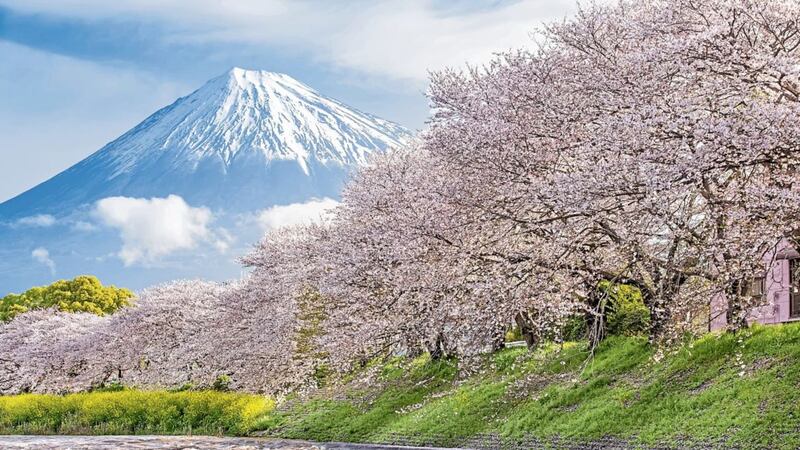IT SEEMS a little early and has no doubt been prompted by the mild winter, but cherry blossom is already beginning to appear in abundance, heralding the arrival of what for many gardeners is the best time of the year.
Between now and May, dozens of different varieties of ornamental cherry will bear flowers ranging from the purest white through to deep pink, and all shades in between. Edible cherry trees too, both wild and domesticated, will blossom but not quite with the same intense profusion.
While the arrival of the cherry blossom is widely welcomed in Europe, across the world in Japan that the unfurling of the flowers is greeted with almost public hysteria.
Hanami – literally meaning 'flower viewing' – is an annual Japanese festival to mark the beginning of spring. In a tradition dating back centuries, people gather underneath a flowering cherry tree and enjoy a picnic or party.
The best pitches for these booze-fuelled get-togethers are apparently secured with a zeal similar to beach towel-armed German holidaymakers targetting prime sunloungers in the 1980s – it sounds like a week-long bad St Patrick's Day, or maybe just St Patrick’s Day.
Cherry blossom is central to Japanese culture and has close associations with its imperial past. In ancient times, it signalled the start of the rice-planting season, while in the middle of the last century the ephemeral symbolism of the somei-yoshino variety, with its short-lived blossoms, was adopted by Kamikaze pilots whose planes were adorned with images of the flowers.
However, as a recently-published book explains, Japan's ornamental cherry trees faced a threat in the last century and owe their survival not to Zen or the population's assiduous character but to an eccentric Englishman called Collingwood Ingram (1880-1981) – who, due to his life’s obsession, acquired the nickname 'Cherry'.
As outlined in Naoko Abe's 'Cherry' Ingram: The Englishman who Saved Japan's Blossoms, the book’s chief protagonist was an avid collector of Prunus varieties who would ship his spoils from the Far East back to his garden in Kent, which once boasted 120 different kinds.
The obsessive Ingram’s 1948 book Ornamental Cherries helped popularise the trees in Britain and Ireland, and the subsequent decades saw the planting of tens of thousands of cherries, adding a touch of colour and Asian exoticism wherever they bloomed.
The situation in their homeland, however, was different. The population of cherry trees was recovering from near extinction over the previous decades, caused by a combination of disease-susceptible stock, air pollution and feudal lords abandoning their large estates.
Ingram's quest began with a mission to reintroduce the Taihaku (Great White) cherry, which he called "by far the most beautiful of all white cherries". It had disappeared in Japan, alongside many other classic varieties, but was growing in Ingram's garden having been grown from cuttings brought from the Far East a quarter of century previous.
Originally published in 2016 in Japanese, Abe’s book is a unique mix of politics, heritage and horticulture that celebrates the life of man who selflessly safeguarded a spring tradition on the other side of the world.
The plants Ingram bred – not exclusively ornamental cherries – can still be found in gardens today and an avenue of his 'Asano' cherry is one of the features of Kew Gardens.
Accordingly, there is also Prunus 'Collingwood Ingram’, the cherry that bears his name. A small, columnar, deciduous tree with bronze spring foliage that turns green for summer then has good autumn colour, it produces deep pink blossom in the spring.
:: 'Cherry' Ingram: The Englishman who Saved Japan's Blossoms by Naoko Abe's is published by Chatto & Windus









